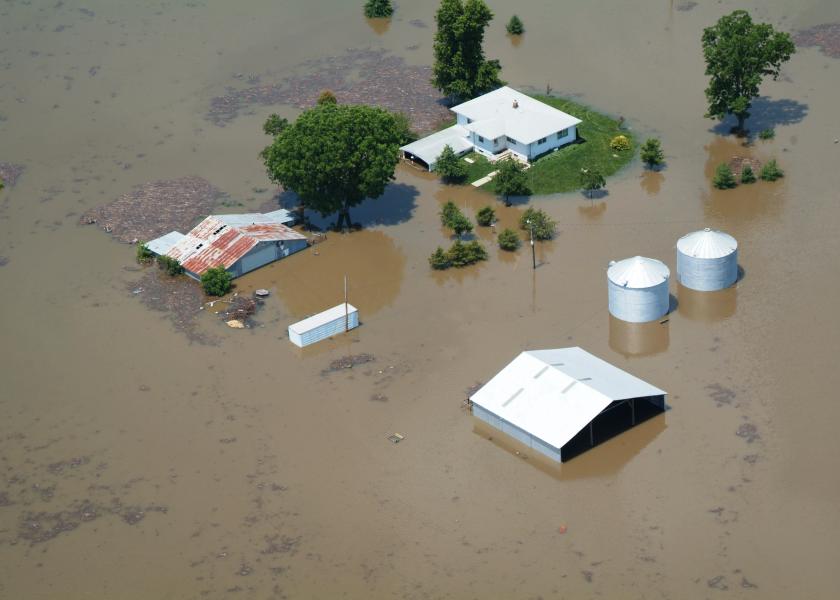FDA Offers Resources for Assessing Flood-Related Feed Contamination

As the Central and Southern Plains of the United States continue to experience extreme weather and flooding, the U.S. Food and Drug Administration’s Center for Veterinary Medicine reminds animal food producers who may be mixing, storing or distributing grains and other foods for animals about information resources available.
While there are few, if any, crops growing right now, previously harvested crops or siloed feed materials could become contaminated and no longer suitable for feeding. Flood waters, which are different from pooled rain water, may contain sewage, pathogenic organisms, pesticides, chemical wastes, or other toxic substances. Mold growth is another serious concern for flood impacted crops intended for use in animal food. Some molds produce mycotoxins, which are toxic to certain animals and people.
Previously harvested crops that may be deemed unsuitable for human food use sometimes can be salvaged for animal food. FDA will work with producers to consider requests to recondition an adulterated crop into animal food on a case-by-case basis. FDA’s compliance policy guide (CPG 675.200) provides a step-by-step process for reconditioning requests. Those requests should be directed to the following individuals in the relevant FDA field office:
- For contamination events that occur in Kansas, Nebraska, Missouri and Iowa:
Victoria Wagoner, 913-495-5150 - For contamination events that occur in Minnesota, Wisconsin, South Dakota and North Dakota:
Kristy Zuroski, 612-758-7120 - For contamination events that occur in Illinois and Michigan:
Kelli Wilkinson, 313-393-8120 - For contamination events that occur in Louisiana, Tennessee, Mississippi and Kentucky:
Toni Williams, 513-679-2700 x2160 - For contamination events that occur in Arkansas:
Casey Hamblin, 214-253-5222
For more information, see Crops Harvested from Flooded Fields Intended for Animal Food: Questions and Answers.
Additionally, your state’s Department of Agriculture may have state-specific requirements regarding any attempt to clean, process, test, and sell/use crops or siloed materials for animal food. FDA will also continue working with USDA, state partners, and associations on broader questions that may arise about crops and materials for animal food.
For more information:
General Information on Evaluating the Safety of Food and Animal Food Crops Exposed to Flood Waters
CPG Sec. 683.100 Action Levels for Aflatoxins in Animal Feeds
Guidance for Industry: Fumonisin Levels in Human Foods and Animal Feeds Final Guidance
CPG Sec. 575.100 Pesticide Residues in Food and Feed - Enforcement Criteria
CPG 675.200 Diversion of Adulterated Food to Acceptable Animal Feed Use







